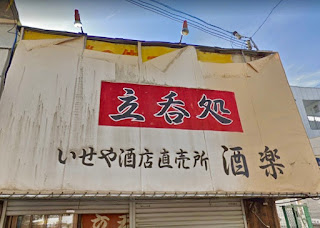See the UPDATE below.
Text from
Japan Today, 6/17/19.
An award-winning photojournalist has shed light on forgotten Japanese women, who married Korean men and moved to North Korea in a 1959-1984 repatriation project.
"They have been in different settings since arriving in North Korea. Some of them have lost contact with their relatives in Japan, while some still wrestle with their conscience as they left their families in Japan behind," said Noriko Hayashi.
"Each of their lives is equally irreplaceable, and as most of them are getting old, we do not have that much time left to hear what they have to say," she added.
Recording their unheard voices and photographing their present-day lives, Hayashi will soon publish a book, "Japanese Wives Who Moved to Korea," on the occasion of the 60th anniversary of the launch of the repatriation project.
It brought 93,000 people -- Koreans and their families including 1,830 Japanese wives -- to the North, which was hailed a "paradise on earth," with secure employment and housing.
Hayashi, 35, visited North Korea 11 times from 2013 to 2018 and met with nine Japanese wives. While North Korean guides or interpreters attended each interview, Hayashi said she did not feel too constrained by them.
...
Tokyo-based Iwanami Shoten Publishers will publish Hayashi's book, which will cost just over 1,000 yen with 32 photos, on June 20.
Read the whole story:
https://japantoday.com/category/national/feature-photojournalist-reveals-unheard-voices-of-japanese-wives-in-n.-korea
This is a fascinating and very important project. It is unfortunate that no photos were included with the news story. Luckily Noriko Hayashi has a great website with information about her projects and lots of great and illuminating photos. This project isn't listed on her website yet but there are plenty of other photos from North Korea. And other places as well. I highly recommend checking out her work.
Noriko Hayashi's website:
https://norikohayashi.com/
Of personal interest is a project about a young deaf boy in Cambodia living with HIV/AIDS. (VAOJ readers are familiar with my research on
HIV/AIDS in Japan, especially concerning
Deaf communities.)
https://norikohayashi.com/living-with-hiv-and-deafness-bunhengs-story
UPDATE!
The Japan Times (6/18/19) ran the same story with a picture.
Caption: Mitsuko Minakawa, one of the Japanese wives who moved to North Korea, holds her wedding picture, taken in 1960 in Hakodate, Hokkaido, at her apartment in Wonsan in August 2016.
COURTESY NORIKO HAYASHI VIA KYODO
https://www.japantimes.co.jp/news/2019/06/18/national/photojournalist-documents-unheard-voices-japanese-wives-went-north-korea/



















































